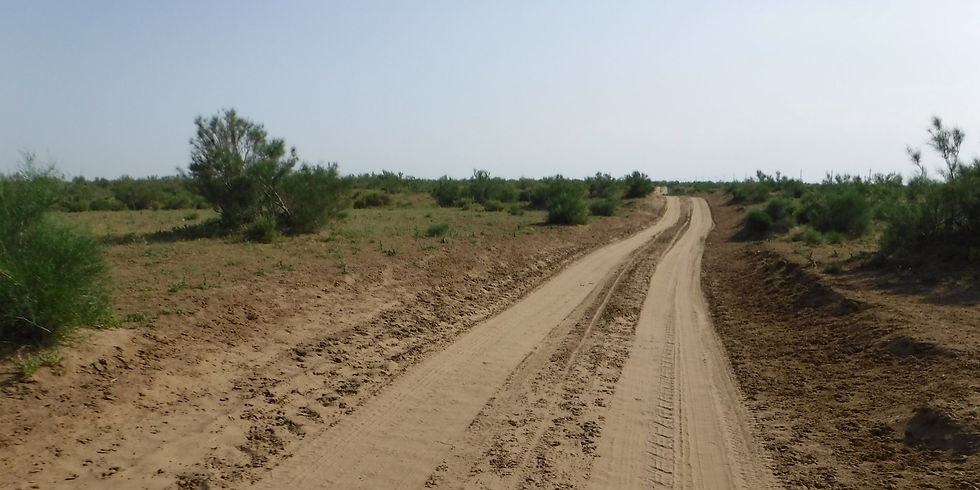
TURKMENISTAN - Mary
Gonur Tepe
Gonur Tepe is located about 60 km north of Mary and is about 55 hectares that was inhabited by Indo-Iranian peoples until sometime in the 2nd millennium BCE dating back to 2500 BCE (bronze age). It is a part of the State Historical and Cultural Park “Ancient Merv” listed by UNESCO.
The site was discovered by archaeologist Viktor Sarianidi who found a large palace, a fortified mud-brick enclosure, and temples with fire altars which he believes were dedicated to the Zoroastrian religion.
The site was most likely abandoned after the course of the Murghab River shifted to the west. Gonur is among the largest ruins in the Morghab delta region; over 150 ancient settlements dating to the early Bronze Age (2500-1700 BCE) have been found there.
BEST TIME to VISIT TURKMENISTAN
BEST TIME to TRAVEL to GONUR TEPE
From May to September
(hot in summer)

Gonur Tepe - walls

Gonur Tepe - Palace

Gonur Tepe - Palace

Gonur Tepe - large pottery oven

Gonur Tepe - Palace - reconstructed walls and pilar

Gonur Tepe - Pottery are found all over the site

Gonur Tepe - city walls (left one is reconstructed)

Gonur Tepe - reconstructed walls

Gonur Tepe - Necropolis

Gonur Tepe - Palace entrance - reconstructed walls

Gonur Tepe - reconstructed city wall

Gonur Tepe - Palace - Temple - fire altar

Gonur Depe ruins - Tomb with the skeleton of a small dromedary

Gonur Tepe - city walls

Gonur Tepe - overview

Gonur Tepe - overview

Gonur Tepe - reconstructed walls

Gonur Tepe - paying your ticket entrance

Gonur Tepe - Pottery oven

Gonur Tepe - reconstructed walls

Gonur Tepe - the city had water reservoirs and pipes underground to deliver it

Gonur Tepe - reconstructed walls

Gonur Tepe - Palace entrance


Gonur Tepe - overview

good camouflage for this lizard

Gonur Tepe - reconstructed walls

driving off-road to Gonur Tepe - Dromedaries

driving off-road to Gonur Tepe - cattle

driving off-road to Gonur Tepe

driving off-road to Gonur Tepe

Margush - Gonur Tepe

Margush - Gonur Tepe

Margush - Gonur Tepe

Margush - Gonur Tepe